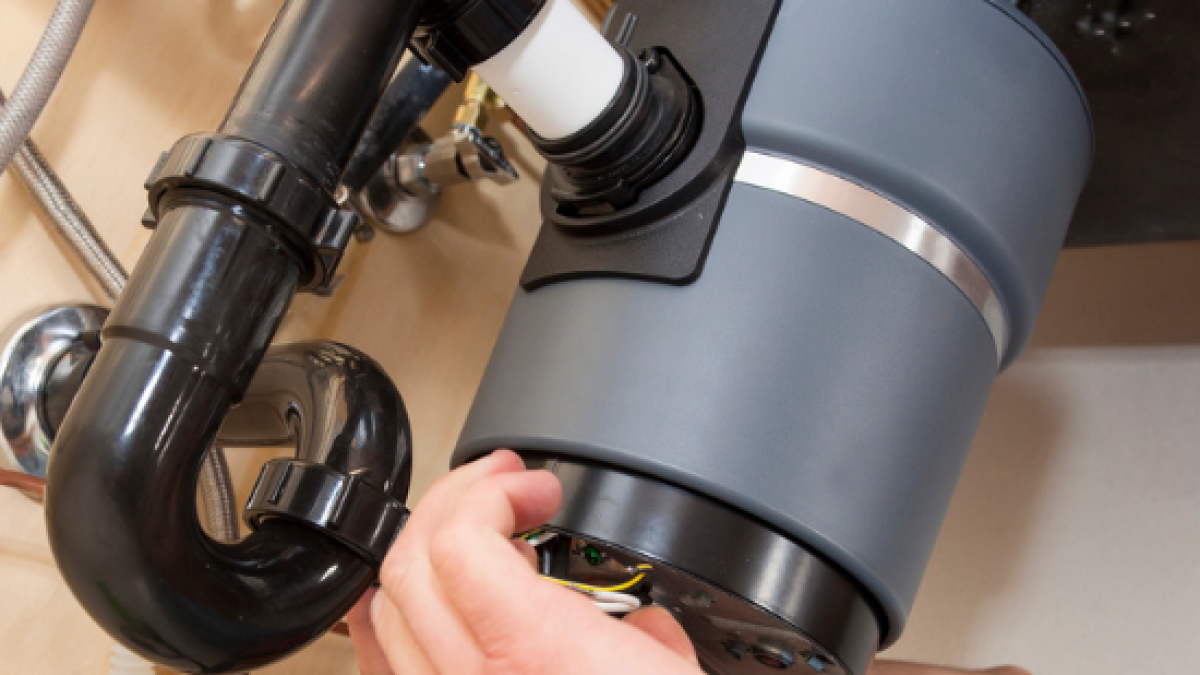Easy-to-Follow Instructions for Repairing a Leaky Waste Disposal
Easy-to-Follow Instructions for Repairing a Leaky Waste Disposal
Blog Article
The writer is making a few good annotation related to How to fix a pretty consistent leak from my garbage disposal in general in this post below.

Garbage disposals are crucial kitchen area home appliances that help in getting rid of food waste effectively. However, a leaking waste disposal unit can be an aggravating and messy issue to manage. Thankfully, numerous leaks can be taken care of conveniently with a few basic steps. In this post, we will discuss just how to take care of a leaking waste disposal unit efficiently.
Intro
Waste disposal unit are mounted under kitchen sinks and are designed to shred food waste right into smaller sized pieces, permitting it to pass through the pipes system conveniently. While these devices are typically dependable, leakages can happen with time as a result of wear and tear, loosened links, or damage to the unit.
Typical Root Causes Of Leaks in Waste Disposals
Worn Seals and Gaskets
Seals and gaskets play an essential function in protecting against water from leaking out of the waste disposal unit. Gradually, these parts can degrade, causing leaks around the disposal device.
Loose Connections
The links in between the waste disposal unit and the plumbing system can end up being loosened with time, creating water to leak out throughout operation.
Cracks or Openings in the Disposal System
Physical damage to the waste disposal unit, such as splits or openings in the housing, can likewise result in leaks.
Recognizing the Source of the Leakage
Prior to trying to repair a dripping waste disposal unit, it is necessary to determine the source of the leakage. This can commonly be done via aesthetic evaluation or by carrying out easy tests.
Visual Evaluation
Examine the garbage disposal device carefully for any type of signs of water leak. Pay close attention to areas around seals, gaskets, and link factors.
Checking for Leakages
One method to check for leaks is by running water through the disposal system and looking for any noticeable indications of leakage.
Tools and Materials Needed for Taking Care Of a Dripping Waste Disposal Unit
Before beginning the repair service process, gather the needed tools and materials, consisting of a screwdriver, adjustable wrench, plumbing's putty, replacement seals or gaskets, and epoxy or patching product for fixing cracks or openings.
Step-by-Step Guide to Repairing a Dripping Waste Disposal Unit
Switch off the Power
Before attempting any type of repairs, ensure that the power to the garbage disposal system is shut off to avoid the danger of electrical shock.
Situate the Leak
Identify the specific place of the leakage and determine the cause.
Tighten up Links
Make use of a wrench to tighten any loosened connections between the disposal device and the pipes system.
Replace Seals or Gaskets
If the leakage results from used seals or gaskets, remove the old components and replace them with brand-new ones.
Patching Cracks or Holes
For splits or openings in the disposal system, use epoxy or an ideal patching product to secure the broken area.
Checking the Garbage Disposal After Repair Work
Once the repair service is complete, check the waste disposal unit by running water through it to guarantee that the leakage has been solved.
Preventive Upkeep Tips to Stay Clear Of Future Leaks
To avoid future leakages, it is essential to execute regular maintenance on your garbage disposal. This consists of maintaining it tidy, avoiding putting non-food things or tough items down the disposal, and occasionally looking for leakages or other concerns.
Final thought
In conclusion, fixing a dripping garbage disposal is a reasonably simple procedure that can be finished with basic tools and materials. By complying with the actions described in this write-up and practicing precautionary maintenance, you can keep your waste disposal unit in good working problem and stay clear of pricey repair work in the future.
HERE’S HOW TO FIX YOUR GARBAGE DISPOSAL
WHAT TO DO IF SOMETHING IS STUCK IN YOUR GARBAGE DISPOSAL
If the impeller won’t turn, there’s probably something stuck in the disposal. It could be a steak bone or peach pit, although plumbers report pulling all sorts of inappropriate objects out of disposals, such as bottle caps or aluminum foil. Make sure power to the disposal is off, and look inside to see if you can see the source of the jam.
Never stick your fingers in a disposal. Pull out anything you see with tongs or pliers.
If the disposal still won’t work, it may be time to call a plumber or consider buying a new disposal. GEM Plumbing & Heating is here for all of your garbage disposal needs.
WHAT TO DO IF YOUR GARBAGE DISPOSAL DRAIN IS CLOGGED
Take everything out from underneath your sink and put a bucket or other container under your disposal to catch any water that drains out. Disconnect your disposal from the power supply. If it’s plugged into a wall outlet, unplug it. If it’s hardwired into an electrical box, go to the electrical panel and turn off the breaker for the disposal. Pour ¼ cup of baking soda into the drain, followed by ½ cup of white vinegar. Give the solution a few minutes to fizz and do its work. Look into the disposal with a flashlight to see if you can see an object that might be causing the clog. If you see it, remove it using tongs or pliers. MORE TIPS ON DEALING WITH A CLOGGED GARBAGE DISPOSAL
Never use drain cleaner in a garbage disposal. It can damage the plastic parts inside the disposal. You can also be splashed with the caustic liquid while working to clear the clog. Beware! Never stick your fingers into a garbage disposal. Trust us — not a good idea. In many instances, your dishwasher drains through your garbage disposal. This allows the disposal to grind any large food particles that may be drained out of your dishwasher. There are some jurisdictions, however, where the plumbing code prohibits such a connection. WHAT TO DO WHEN YOUR DISHWASHER DRAINS THROUGH THE DISPOSAL
Run some water in the sink so your plunger has at least a ½-inch of water to create a seal and plunge vigorously up and down several times. You may need to repeat this several times. Run hot water down the drain to clear any residue that remains.

As a fervent person who reads about How to fix a pretty consistent leak from my garbage disposal, I think sharing that short article was appropriate. Are you aware of somebody who is involved in the niche? Please feel free to share it. Thank you so much for going through it.
Contact Us Today Report this page